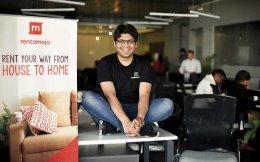The e-grocery space has seen a lot of headwinds lately, with funding difficult to come by and operational costs spiralling out of control. In fact, last year alone saw more than half-a-dozen funded startups in the space, including names like PepperTap and LocalBanya, shut shop even as the likes of Grofers consolidated operations.
Keeping a lid on costs and optimising processes is, clearly, the key to survive—and thrive. To that end, Bangalore-based ZN Retail Pvt. Ltd, which runs e-grocery startup ZopNow, is banking on a unique business model that it calls 'scale-local', which does away with warehousing as well as traditional hyperlocal delivery.
On the back of this cost-effective model, a sharp focus on contribution margin (selling price minus variable cost) and measured expansion plans, ZopNow CEO Raj Pandey feels the company will be able to garner a small part of the $20-30 billion opportunity that e-grocery presents, exactly what it needs to be successful.
In a candid interview with VCCircle, Pandey talks about ZopNow's operational model, funding plans, new revenue streams, and more.
What is ZopNow's business model? What's your differentiator?
The e-grocery industry has seen two business models. One, warehouse-based, where you open a low-cost warehouse outside the city and offer a significant range. Two, the hyperlocal model, where you tie up with local kirana stores. We have opted for the 'scale-local' model, wherein we tie up with 7-10 big retailers, which gives us access to a wide range and optimises logistics costs as well. While we are not running a warehouse, we have scale and better unit economics.
In this model, there is concentration of orders—we get the same benefits that we would have from a warehouse. Plus, there is no pilferage, no rent and no utilities. The only cost is packing and the logistics, with the latter highly optimised. For instance, if a basket is for Rs 1,000 from a store doing more than 300 orders per day, we make money.
What are your revenue streams?
We have three streams: commission, advertising and shipping, split 80-10-10. We have also started a software-as-a-service (SaaS) stream, and are partnering offline retailers who want to go online in return for licence and transaction fees. We have three partners using this, and two more are in the works.
What kind of traction is the business seeing?
We have tied up with four of India's top retail chains—HyperCity, More, Star Bazaar and Metro. We are present in about 30 stores in 10 cities, which is enough to make our revenue grow 4x and ramp up the business without much capex. We do 5,000 orders per day.
Between what we get from advertising, shipping and commissions, if the basket is Rs 1,200, we make Rs 120-140. Since the click-to-finish cost is less than that, we are contribution-positive.
Are you looking to raise funding anytime soon?
We are in talks for a new round, but have a decent chunk of money left. We can stretch that for 18-24 months. This time, we are targeting a bigger round, in range of $20-30 million. We have commitments from existing investors for this round.
What are your plans for 2017?
We expect the industry to become more rational in terms of customer acquisition. Our game plan would be to concentrate on contribution margin versus growth, build scale, bring in more stores, and lose less money on operations. We will tie up with large e-commerce players and offline retailers to acquire more customers. At the logistics end, our contribution margin works.
How far is profitability? What kind of margins are you looking at?
That is a tough battle considering the marketing expenses, although we are comfortable on logistics side. I would like to make 3-4% margin.
Who is your biggest competitor?
People think our competition would be another major e-grocery, but I think it is kirana stores. They know the business well and have survived for a long time. We are less than 0.2% of the overall market. But I believe e-grocery is here to stay given the value-proposition.
Even though the penetration is 4%, the opportunity is worth $20-30 billion over the next 3-4 years. We just need a small part of it to be successful. The market can accommodate 4-5 players, though time alone will tell whether these will be pure play e-grocery or a combination of horizontal commerce.
What are your views on the industry as a whole?
E-grocery is a tough business to crack. Margins are low even if you go the private label way. Logistics and handling costs are high as we deal in bulky and perishable articles. As long as the participants in the industry behave well and the logistics are dense, the industry will make money. At ZopNow, we focus on contribution margin and try automating as far as possible.
Like this interview? Sign up for our daily newsletter to get our top reports.






